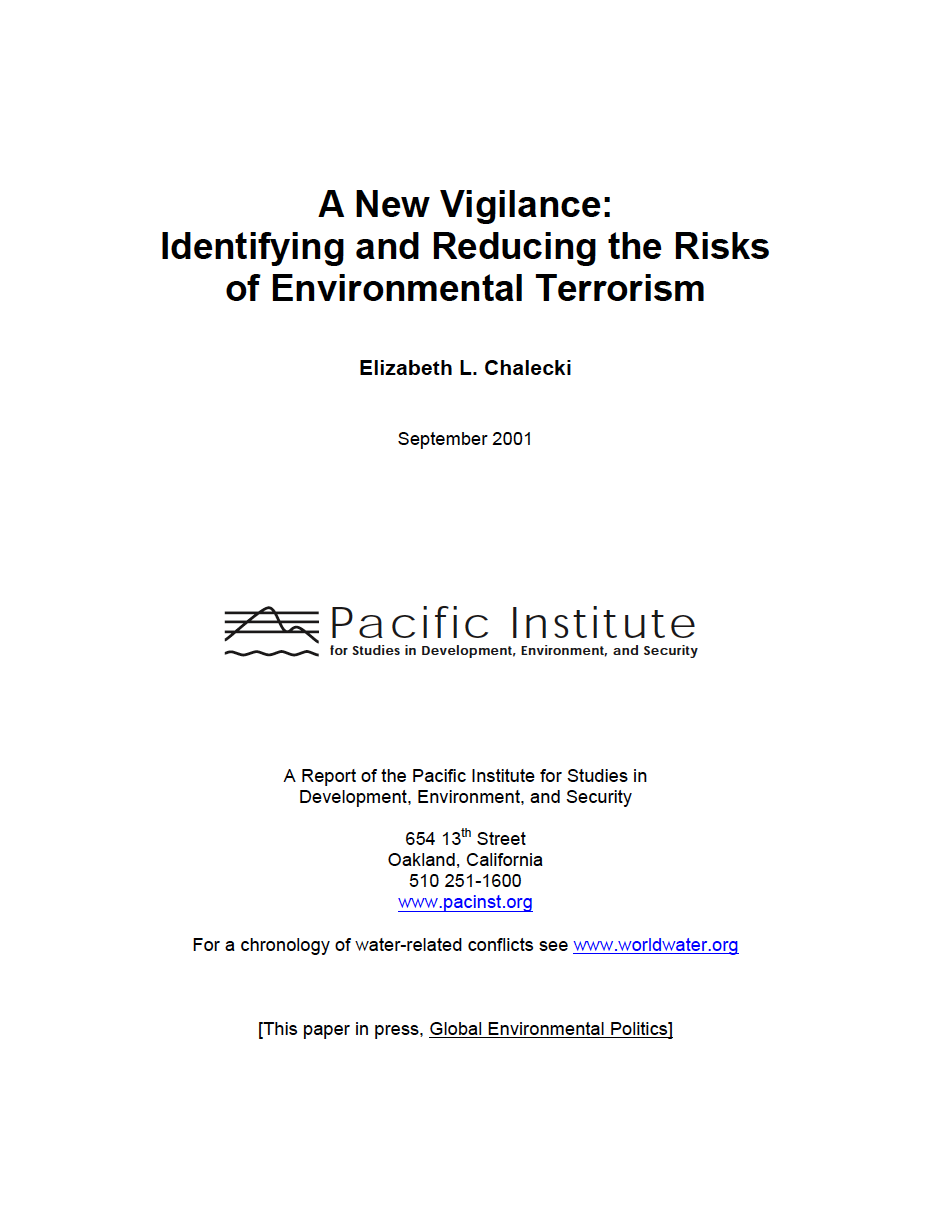A New Vigilance: Identifying and Reducing the Risks of Environmental Terrorism

A New Vigilance: Identifying and Reducing the Risks of Environmental Terrorism
Overview
Environmental terrorism is an old type of conflict with a new face. Large, costly wars between two or more states have become less prevalent over the past 50 years, and with the end of the Cold War and the demise of the Soviet Union, there has been no bipolar superpower standoff to suppress the many ethnic, religious, and multipolar political and cultural tensions that motivate terrorist actions. Even the very nature of terrorism itself is changing. Attacks are becoming lethal to a greater number of people, as the events of September 11, 2001 demonstrated to the world. Most recent discussions of terrorism have focused on the identity of the terrorists, their motivations, and the increasingly destructive potential of the “weapons” at their disposal. However, to date, there has been relatively little discussion about their choice of targets. Environmental security scholars know that a strong argument can be made for linking certain resource and environmental problems with the prospects for political tension, or even war and peace. History shows that access to resources has been a proximate cause of war, resources have been both tools and targets of war, and environmental degradation and disparity in the distribution of resources can cause major political controversy, tension, and violence.
Terrorism experts have opined that in the last decade, the nature of terrorism has changed from professional, politically-motivated acts to amateur acts motivated by any number of grievances: religious, social, political, or personal. There are well known ambiguities in defining “terrorism” and specifically “environmental terrorism.” Yet there are also real risks facing governments and the public and that an effort must be made to better understand these risks and appropriate responses. An examination of environmental terrorism adds a new dimension to these definitions, identifying the target as a natural resource or environmental feature. At a time when populations all over the world are increasing, the existing resource base is being stretched to provide for more people, and is being consumed at a faster rate. As the value and vulnerability of these resources increases, so does their attractiveness as terrorist targets. The destruction of a natural resource can now cause more deaths, property damage, political chaos, and other adverse effects than it would have in any previous decade.
This paper will define environmental terrorism as distinct from eco-terrorism and from environmental warfare, discuss the risk of environmental terrorism as a function of consequence and probability, and examine various types of attacks that use the environment both as a target and a tool of terror. Finally, several ideas for reducing the risk of environmental terrorism will be discussed.

